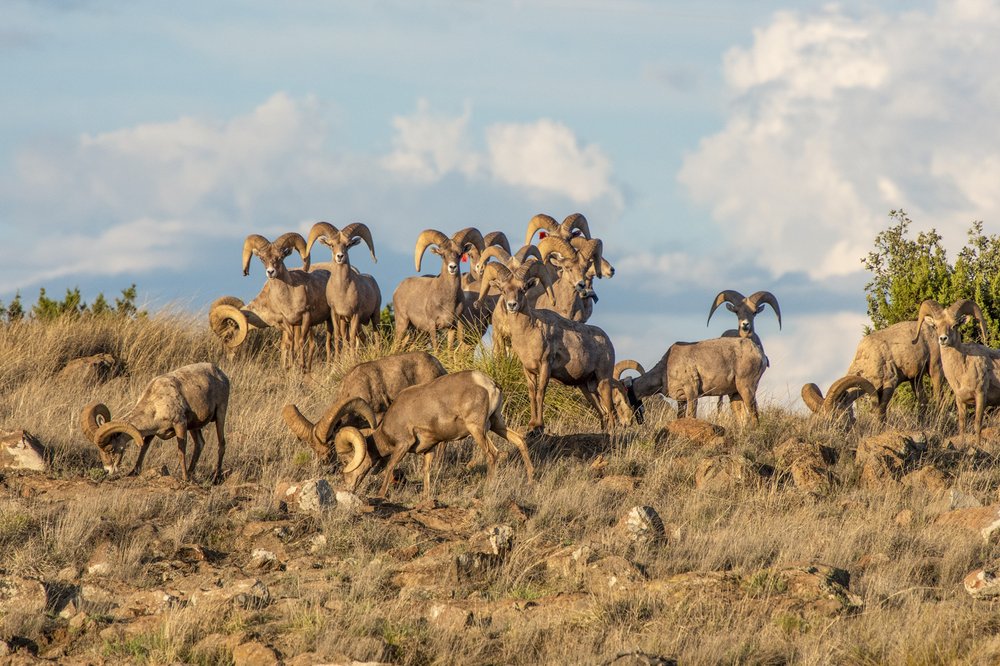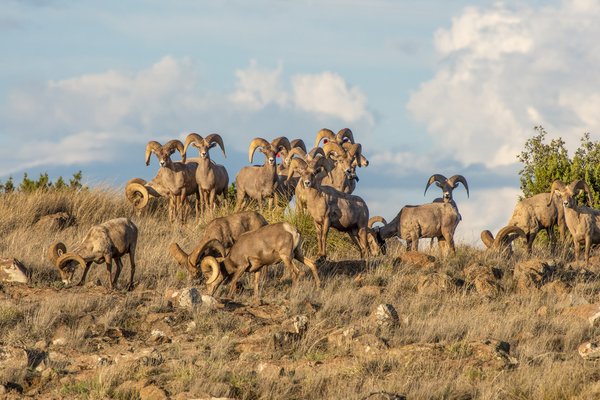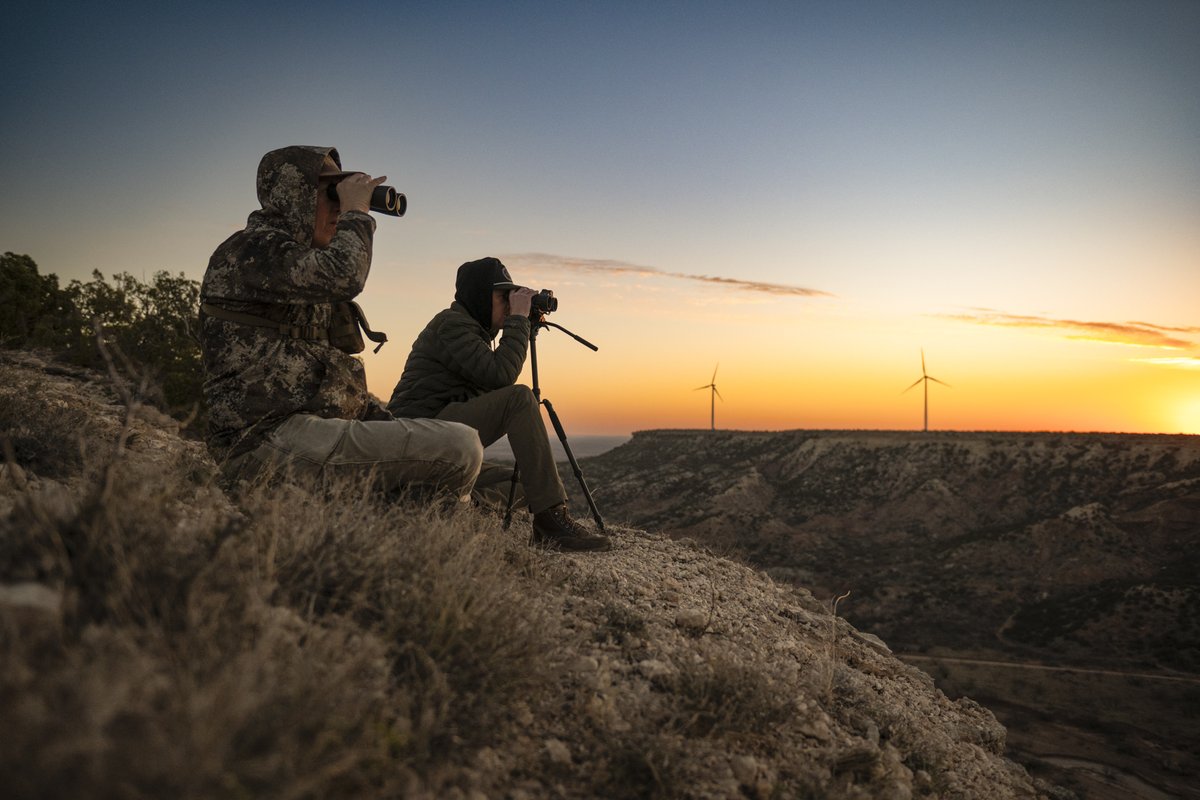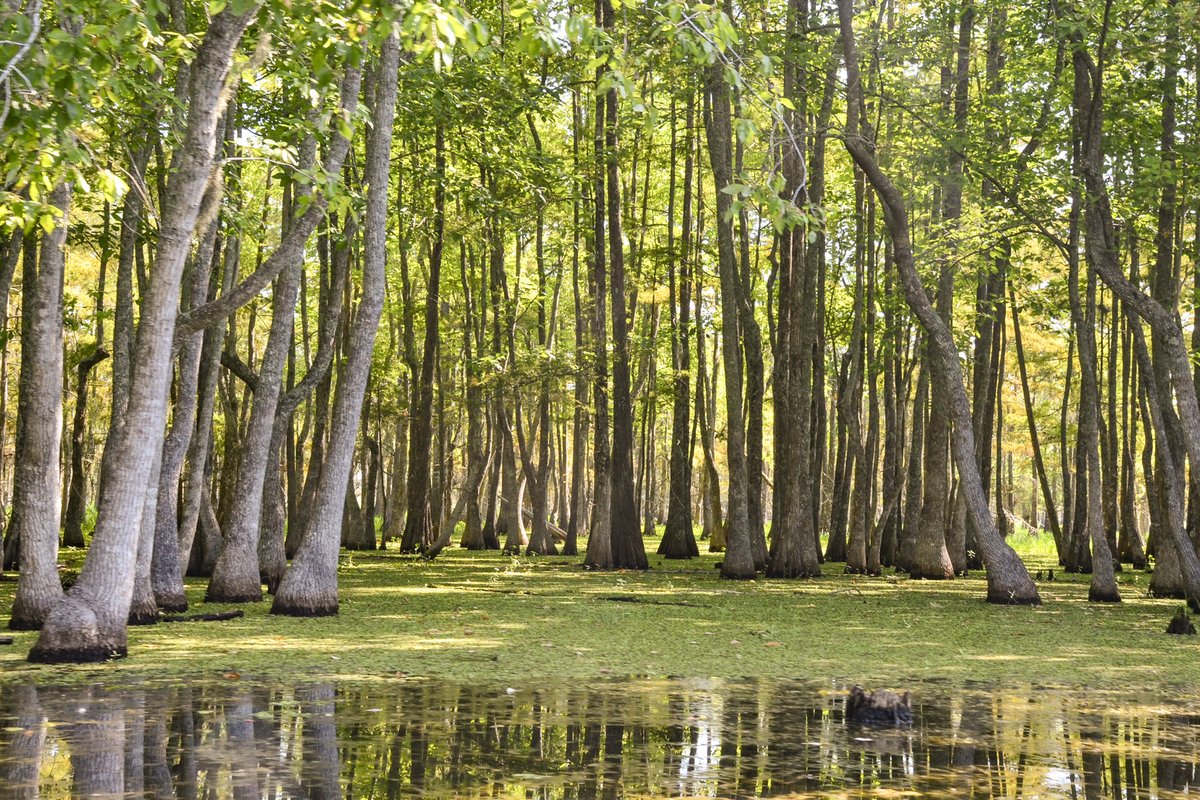Bighorn sheep lived in the mountains of West Texas for thousands of years, as documented by Native American wall paintings found in the region, though new threats such as unregulated hunting and disease caused bighorn populations to dwindle until they were eradicated from Texas by the early 1960s.
Restocking efforts that began mid-century have paid off over the last several decades, and more than 1,000 bighorn sheep now live in West Texas. In October, the Texas Parks and Wildlife Department (TPWD) is bringing several sheep to the Franklin Mountains from Elephant Mountain Wildlife Management Area near Alpine to reintroduce them to this part of their historic range. Franklin Mountains State Park will be the second Texas state park (after Big Bend Ranch) to host bighorn sheep.
TPWD wildlife biologists are excited to establish this new population in the Franklin Mountains because of its strategic location. Geographic features — the city of El Paso to the south, the Rio Grande and Interstate Highway 10 to the west and Texas Highway 54 to the east — will insulate bighorns from potential threats like the aoudad, an exotic species of sheep from Africa that thrives in the West Texas desert and competes with bighorns for resources. The geography of the mountains also creates a quarantine zone: aoudad carry a bacteria called Mycoplasma ovipneumoniae (or “Movi” for short), which causes lethal pneumonia in bighorns.
In the coming months, TPWD biologists will commence an action-packed process of capturing more than 50 bighorns, transporting them nearly 300 miles and then releasing them into the Franklin Mountains. For more information about the official release and future viewing opportunities, visit the Franklin Mountains State Park page on Facebook.






